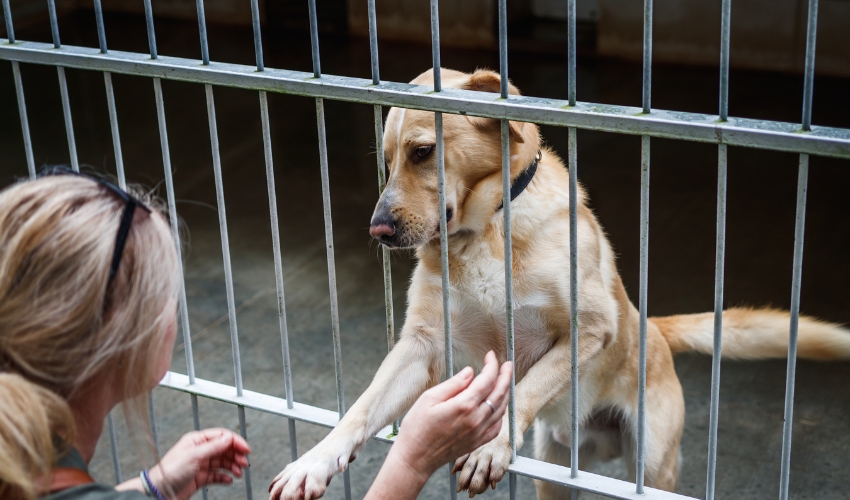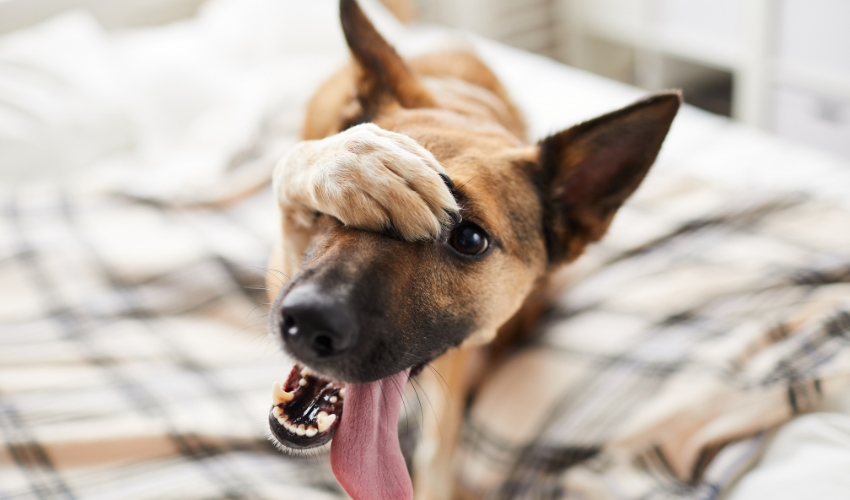Parvovirus in Humans vs in Dogs
Am I at risk of catching Parvovirus if my dog has contracted the disease?
 If you have confirmed a Canine Parvovirus (CPV) diagnosis for your dog, it is normal to wonder if you are at risk of catching the illness. The good news is that Human Parvovirus B19 is a completely different disease, and CPV cannot be transmitted from a dog to a human. Likewise, humans cannot give their pets the disease Human Parvovirus B19.
If you have confirmed a Canine Parvovirus (CPV) diagnosis for your dog, it is normal to wonder if you are at risk of catching the illness. The good news is that Human Parvovirus B19 is a completely different disease, and CPV cannot be transmitted from a dog to a human. Likewise, humans cannot give their pets the disease Human Parvovirus B19.
Transmission of Human B19
Human Parvovirus B19 is typically passed through mucus and saliva, physical contact, or in the blood from a pregnant mother to her baby. You are most contagious when you have a fever or a cold due to the illness. Once a rash appears, you are most likely not contagious anymore. Those with Fifth Disease (caused by Human Parvo B19) that also have weakened immune systems, may potentially be contagious for a longer time.
Signs and Symptoms
The most common symptom for Human Parvovirus B19 is a face rash, and other common symptoms include fever, upset stomach, headache, and a runny nose. Other less common symptoms include swollen joints and occasionally anemia (a condition in which the body doesn’t have enough healthy red blood cells).
The Rash
 Parvovirus in humans is most common in children, and several days after the first symptoms become visible, a bright red facial rash will appear on both cheeks. This rash may continue onto other parts of the body, including the arms, abdomen, legs, and backside. The rash is pink and usually raised, and may cause irritation.
Parvovirus in humans is most common in children, and several days after the first symptoms become visible, a bright red facial rash will appear on both cheeks. This rash may continue onto other parts of the body, including the arms, abdomen, legs, and backside. The rash is pink and usually raised, and may cause irritation.
Once a rash appears, it is commonly mistaken for another illness or a side effect of a medicine or topical gel. The rash may appear and disappear on and off for several weeks and will appear more visible when a child is exposed to high temperatures. Adults do not typically develop a rash, but rather the most defining symptom is joint pain in the hands, wrists, knees, and ankles (Mayo Clinic).
Fifth disease is a mild rash illness that is typically found in adults and is caused by Parvovirus B19. It usually takes about four to 14 days for a person to develop Fifth’s Disease after being infected with parvovirus B19.
Diagnosis
Your doctor can typically diagnose Fifth Disease from the rash that will appear on the face. It is not normal to perform a blood test, but your healthcare provider can do the test to determine if you are susceptible or immune to Parvovirus B19 infection.
Treatment and Prevention
 Unlike dogs, there is no vaccine to prevent Parvo B19 in humans. The best methods to prevent contracting the disease include washing your hands, and not sharing food or drink. You should also cover your mouth when you cough or sneeze, and avoid people who are sick. Most cases of the illness are mild and do not require treatment.
Unlike dogs, there is no vaccine to prevent Parvo B19 in humans. The best methods to prevent contracting the disease include washing your hands, and not sharing food or drink. You should also cover your mouth when you cough or sneeze, and avoid people who are sick. Most cases of the illness are mild and do not require treatment.
Children and adults who are healthy and do not have any other ailments, typically recover completely, and treatment usually consists of relieving the symptoms. If you have complications from the disease, you should see a healthcare provider for medical treatment. “Once you recover from fifth disease, you develop immunity that generally protects you from parvovirus B19 infection in the future” (The CDC).
Canine Parvovirus and Human Parvovirus B19 are very different diseases that have different symptoms, different treatment methods, and different prevention tactics. The two diseases are completely different, including the severity of the symptoms and urgency for treatment and care. We hope this clarifies the two diseases for you and calms your nerves if you were afraid of catching Parvo from your dog!
Sources:











